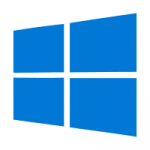A recent Washington Post article is helping to answer some questions about Microsoft’s actions in recent months. Here’s a timeline of events:
2012 (or possibly earlier): The NSA identifies a vulnerability in Windows that affects all existing versions of the operating system, and has the potential to allow almost unfettered access to affected systems. A software tool — an exploit — is developed either for, or by, the NSA. The tool is called EternalBlue. People at the NSA worry about the potential damage if the tool or the vulnerability became public knowledge. They decide not to tell anyone, not even Windows’ developer, Microsoft.
EternalBlue finds its way into the toolkit of an elite hacking outfit known as Equation Group. Although it’s difficult to know for certain, this group is generally assumed to be operating under the auspices of the NSA. Equation Group may work for the NSA as contractors, or they may simply be NSA employees. Regardless, the group’s actions seem to align with those of the NSA: their targets are generally in places like Iran, Russia, Pakistan, Afghanistan, India, Syria, and Mali.
Early to mid-2016: A hacking group calling themselves The Shadow Brokers somehow gains access to NSA systems or data, and obtains copies of various NSA documents and tools. Among those tools is EternalBlue.
August, 2016: The Shadow Brokers begin publishing their NSA haul on public services like Tumblr.
January 7, 2017: The Shadow Brokers begin selling tools that are related to EternalBlue.
Late January to early February 2017: The NSA finally tells Microsoft about the vulnerability exploited by EternalBlue. We don’t know exactly when this happened, but it clearly happened. The NSA was Microsoft’s source for this vulnerability.
February 14, 2017: Microsoft announces that February’s Patch Tuesday updates will be postponed. Their explanation is vague: “we discovered a last minute issue that could impact some customers.”
Late February 2017: The Windows SMB vulnerability exploited by EternalBlue is identified publicly as CVE-2017-0144.
March 14, 2017: March’s Patch Tuesday updates from Microsoft include a fix for CVE-2017-0144, MS17-010. The update is flagged as Critical and described as Security Update for Microsoft Windows SMB Server (4013389). Nothing in Microsoft’s output on March 14 calls special attention to this update.
April 14, 2017: The Shadow Brokers release 300 megabytes of NSA material on Github, including EternalBlue.
May 12, 2017: WannaCry ransomware infection wave begins. The malware uses EternalBlue to infect vulnerable computers, mostly Windows 7 PCs in Europe and Asia. Infected computers clearly had not been updated since before March 14, and were therefore vulnerable to EternalBlue.
It’s now clear that the NSA is the real problem here. They had several opportunities to do the right thing, and failed every time, until it was too late. The NSA’s last chance to look at all good in this matter was after the vulnerability was made public, when they should have made the danger clear to the public, or at least to Microsoft. Because, after all, they knew exactly how useful EternalBlue would be in the hands of… just about anyone with bad intent.
Everyone involved in this mess acted foolishly. But whereas we’ve grown accustomed to corporations caring less about people than about money, government institutions — no matter how necessarily secretive — should not be allowed to get away with what the NSA has done. Especially when you consider that this is just the tip of the iceberg. For every WannaCry, there are probably a thousand other threats lurking out there, all thanks to the clowns at the NSA.
Ars Technica’s analysis.
Techdirt’s analysis.
 This month’s updates from Microsoft include a patch for a nasty zero-day vulnerability in the .NET framework.
This month’s updates from Microsoft include a patch for a nasty zero-day vulnerability in the .NET framework. boot13
boot13 Since the release of Windows 10, Microsoft has received feedback from certain users, to the effect that the O/S doesn’t meet the “demanding needs of mission critical and compute intensive workloads.” It either doesn’t detect, or simply doesn’t use the capabilities of some types of high-performance hardware.
Since the release of Windows 10, Microsoft has received feedback from certain users, to the effect that the O/S doesn’t meet the “demanding needs of mission critical and compute intensive workloads.” It either doesn’t detect, or simply doesn’t use the capabilities of some types of high-performance hardware.